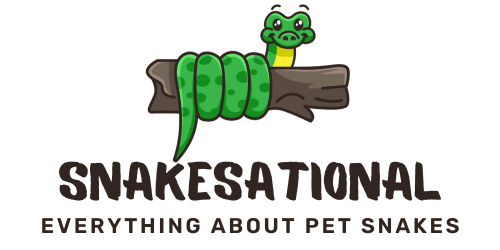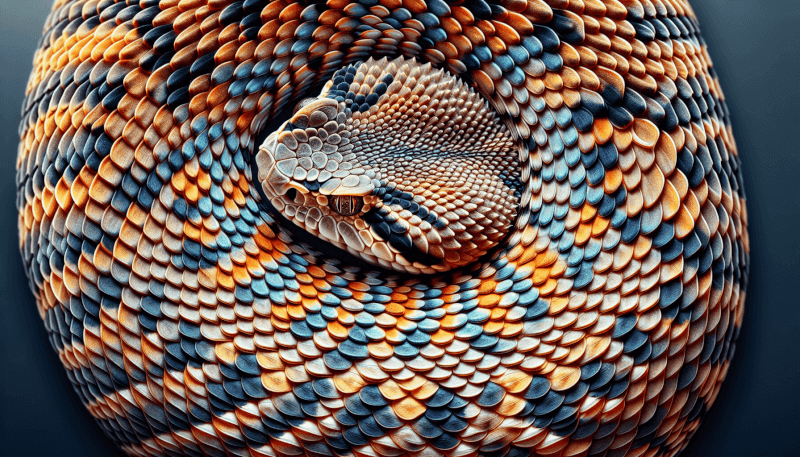If you find yourself in the stunning state of Utah, you may be intrigued to learn about the diverse snake species that call this place home. From the vibrant Western rattlesnake to the sleek and elusive gopher snake, the Utah wilderness is teeming with these fascinating reptiles. Get ready to embark on a journey through the captivating world of snake species in Utah, and discover the unique characteristics that make each of them so special. Take a closer look at their colors, patterns, and behaviors, and gain a newfound appreciation for these often misunderstood creatures. So, grab your binoculars and join us as we unravel the secrets of the snake kingdom in Utah!
Introduction to Snake Species in Utah
Welcome to the comprehensive guide on snake species in Utah! Whether you are a nature enthusiast, a hiker, or simply curious about the reptiles that call Utah their home, this article will provide you with valuable insights into the diverse snake population found in this beautiful state.
Overview of Utah’s Snakes
Utah is home to a variety of snake species, each with its own unique characteristics and importance within the local ecosystem. From the powerful Western Rattlesnake to the fascinating Gopher Snake, these reptiles play a vital role in the balance of nature.
Importance of Understanding Snake Species
Understanding snake species is crucial for several reasons. First and foremost, it helps us coexist peacefully with these creatures and reduces the potential for negative encounters. Additionally, studying snake species can provide valuable insights into the overall health of Utah’s ecosystems and aid in conservation efforts.
Common Snake Species in Utah
To familiarize yourself with the snake species commonly found in Utah, let’s take a closer look at some notable examples:
Gopher Snake
The Gopher Snake, also known as the Bullsnake, is a non-venomous snake that can reach impressive lengths of up to six feet. With their vibrant colors and distinctive markings, they are easily identifiable. These snakes primarily feed on rodents, making them beneficial to farmers and gardeners alike.
Western Rattlesnake
The Western Rattlesnake is one of Utah’s venomous snake species. Recognizable by the rattle on its tail, this snake serves as a reminder of the importance of snake education and safety precautions. It is crucial to understand how to distinguish between venomous and non-venomous snakes to ensure your safety and the wellbeing of these reptiles.
Bullsnake
Another non-venomous snake species found in Utah is the Bullsnake. Known for their intimidating size and muscular bodies, Bullsnakes are skilled predators. They play a significant role in keeping rodent populations in check, making them beneficial to both natural habitats and agricultural areas.
Milk Snake
The Milk Snake is a visually stunning species with a wide array of colors. Often mistaken for venomous snakes due to their vibrant appearance, Milk Snakes are non-venomous and pose no threat to humans. These snakes are excellent climbers and are particularly fond of rocky outcrops and wooded areas.
Description and Characteristics
To gain a deeper understanding of Utah’s snake species, it is essential to explore their physical features, habitat preferences, and behavioral traits.
Physical Features
Utah’s snake species exhibit a wide range of physical characteristics. From the smooth scales of the Gopher Snake to the distinctive diamond pattern of the Western Rattlesnake, the visual diversity among these reptiles is mesmerizing. Understanding these physical traits can aid in the identification and differentiation of species.
Habitat Preferences
Snake species in Utah inhabit varied environments, including deserts, grasslands, forests, and wetlands. Each species has distinct habitat preferences depending on factors such as temperature, moisture levels, and prey availability. By understanding their habitat preferences, we can better appreciate these snakes’ adaptability to different ecosystems.
Behavioral Traits
Snake behavior can differ significantly between species. Some snakes are secretive and elusive, while others are more docile and less likely to strike when threatened. Understanding these behavioral traits is crucial for both ensuring your safety and fostering respect for these remarkable creatures.
Venomous Snakes in Utah
While most snake species in Utah are harmless, it is essential to be aware of the venomous ones for your safety and the safety of the snakes themselves. Let’s take a closer look at two venomous species found in Utah:
Western Rattlesnake
The Western Rattlesnake is one of Utah’s venomous snake species, featuring a distinct rattling sound when threatened. These snakes possess venom that immobilizes their prey but can also be dangerous to humans if bitten. It is crucial to exercise caution and educate ourselves on distinguishing venomous snakes to avoid potentially harmful encounters.
Mojave Rattlesnake
The Mojave Rattlesnake is another venomous snake species found in Utah. Often found in arid regions, this snake’s venom is known to be particularly potent. Educating oneself on the visual and behavioral characteristics of the Mojave Rattlesnake can help minimize the risks associated with encountering this snake in the wild.
Identification and Differentiation
Distinguishing venomous and non-venomous snakes is a vital skill to ensure your safety when traversing snake-inhabited areas. Here are some tips for identification and differentiation:
Distinguishing Venomous and Non-venomous Snakes
To differentiate between venomous and non-venomous snakes, several key features can be observed. Venomous snakes generally have a triangular-shaped head, vertical pupils, and heat-sensing pits located between their eyes and nostrils. Non-venomous snakes often have rounded heads, round pupils, and lack these heat-sensing pits.
Visual Identification Tips
Visual identification is another useful tool for differentiating snake species. By familiarizing yourself with the distinct physical characteristics of each snake, such as color patterns, body shape, and scale texture, you can become more adept at identifying and appreciating the incredible diversity of snake species in Utah.
Threats and Dangers
While snakes can be fascinating creatures, it is important to be aware of the risks associated with snake encounters. Understanding these threats and dangers will help you take appropriate safety precautions and respond effectively in case of a snakebite.
Snakebite Risks
Snakebites can be dangerous and, in some cases, life-threatening. Although the majority of snake species in Utah are harmless, it is crucial to be cautious and avoid provoking or approaching any snakes in the wild. The venomous species, such as the Western Rattlesnake and the Mojave Rattlesnake, should be given a wide berth to minimize the risk of snakebite.
Safety Precautions
To reduce the likelihood of snake encounters and the potential for snakebite, there are several safety precautions you can take. When hiking or exploring snake habitats, wear proper footwear, avoid tall grass or deep underbrush, use a sturdy walking stick, and always be attentive to your surroundings. These simple measures can greatly decrease the chances of a snake encounter.
First Aid for Snakebites
In the unfortunate event of a snakebite, it is crucial to seek medical attention immediately. Stay as calm and still as possible, immobilize the affected limb, and remove any constricting items such as rings or bracelets. Do not apply a tourniquet or attempt to suck the venom out, as these methods are ineffective and may cause further harm. Prompt medical attention is vital for the proper administration of antivenom and to ensure a swift recovery.
Conservation and Protection Measures
Recognizing the importance of snake conservation is crucial for the long-term survival of these fascinating reptiles and the overall health of Utah’s ecosystems.
Importance of Snake Conservation
Snakes play an integral role in balancing ecosystems by controlling prey populations, contributing to nutrient cycling, and serving as a food source for other animals. By promoting snake conservation efforts, we can maintain the delicate ecological balance and protect the diverse species that call Utah home.
Role of Snake Species in Utah’s Ecosystem
Snake species, both venomous and non-venomous, contribute to Utah’s ecosystems in various ways. Predatory snakes help control rodent populations, reducing the risk of crop damage and disease transmission. Snakes also serve as indicators of ecosystem health, enabling scientists to monitor the impacts of habitat degradation and climate change.
Snake Encounters and Tips
Encountering a snake in the wild can be an exhilarating experience. However, it is important to approach these encounters with caution and respect for the snake’s space.
What to Do if You Encounter a Snake
If you come across a snake, it is crucial to remain calm and give the snake ample space. Back away slowly and avoid sudden movements that could startle or provoke the snake. Remember, most snake species will generally try to avoid human contact and will only bite if they feel threatened or cornered.
Snake Encounters in Residential Areas
Snake encounters in residential areas can be disconcerting. However, there are steps you can take to minimize the likelihood of these encounters. Remove potential hiding spots such as debris and woodpiles, keep lawns and gardens well-maintained, and seal any gaps or cracks in your property to deter snakes from entering.
Snakes as Pets
For those interested in keeping snakes as pets, it is crucial to be aware of the rules and regulations governing their ownership and care.
Rules and Regulations for Keeping Snakes as Pets
Snakes are fascinating creatures that can make unique and rewarding pets. However, it is essential to familiarize yourself with the local regulations governing the keeping of snakes as pets. Ensure you have the appropriate permits and understand the specific care requirements for the species you choose to keep.
Popular Snake Species for Pet Lovers
There are numerous snake species that make excellent pets for those interested in keeping them. Popular choices include Corn Snakes, Ball Pythons, and Kingsnakes. These species are generally docile, easy to care for, and come in a variety of beautiful colors and patterns.
Snake Education and Resources
To further expand your knowledge about Utah’s snakes, there are several educational programs and reputable resources available.
Snake Education Programs
Snake education programs provide opportunities to learn about snake species, their habitats, behaviors, and proper safety precautions. Local nature centers, wildlife organizations, and reptile expos often offer educational events and workshops suitable for all ages.
Reputable Resources for Learning about Utah’s Snakes
When researching Utah’s snakes, it is important to utilize reliable and accurate resources. Government agencies, universities, and reputable wildlife organizations often provide informative websites, publications, and field guides specific to the snakes found in Utah.
In conclusion, Utah’s snake species are a varied and important part of the state’s rich biodiversity. By understanding their characteristics, behaviors, and safety practices, we can appreciate and coexist with these remarkable reptiles. Whether you encounter a snake in the wild or decide to keep one as a pet, may you have a newfound appreciation for Utah’s snake species and their place in our natural world.


